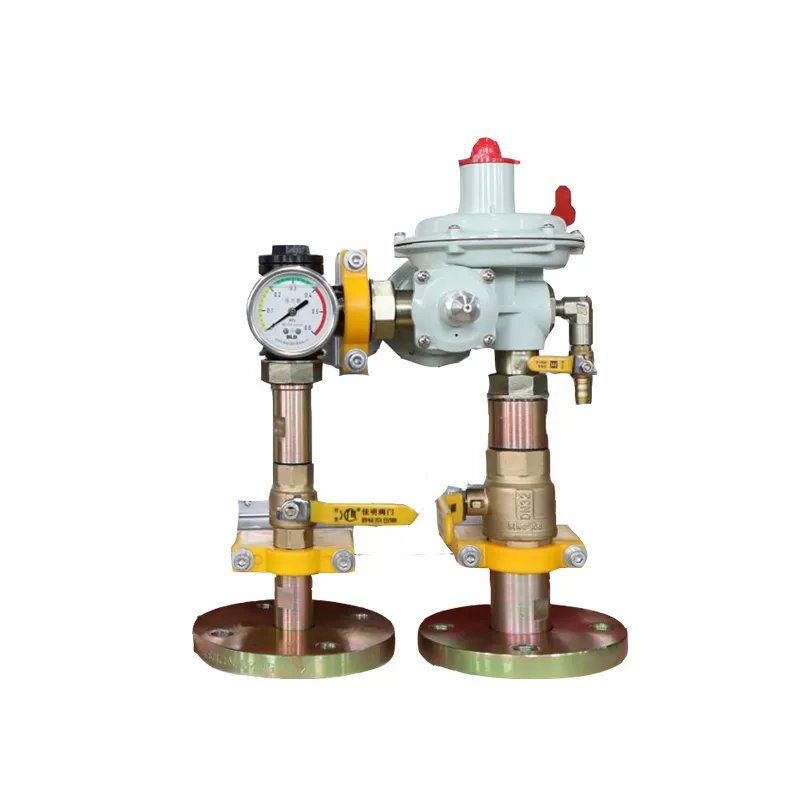
Nov . 27, 2024 07:20
Back to list
Essential Equipment for Liquefied Petroleum Gas Operations and Safety Management
Understanding Liquefied Petroleum Gas (LPG) Equipment A Key Player in Energy Solutions
Liquefied Petroleum Gas (LPG) has emerged as a vital energy source across the globe due to its versatility, efficiency, and relatively low environmental impact. The equipment associated with LPG plays a crucial role in various sectors, including residential heating, cooking, automotive fuel, and even in industrial applications. This article delves into the various types of LPG equipment, their functions, and their significance in energy management.
What is LPG?
LPG is a mixture of propane and butane, both of which are gases at normal temperature and pressure but can be easily liquefied under pressure. This property allows LPG to be stored in portable cylinders or large tanks, making it convenient for transportation and use in areas where natural gas is not available. LPG is widely appreciated for its high calorific value, which allows it to produce a significant amount of energy relative to its volume.
Types of LPG Equipment
1. Storage Tanks and Gas Cylinders LPG is stored in specially designed tanks and gas cylinders that can hold the gas in its liquid form. These storage solutions are built to withstand high pressure and are equipped with safety features to prevent accidents such as leaks and explosions. For residential use, smaller gas cylinders are common, while larger underground or above-ground tanks are used for commercial and industrial purposes.
.
3. Distribution Pipeline Systems For large-scale use, such as in refineries or industrial setups, LPG is transported through a network of pipelines. These pipes must be constructed of robust materials to handle the pressure of the gas while ensuring minimal leakage. Proper maintenance and regular inspections of pipeline systems are vital to prevent accidents.
معدات غاز البترول المسال

4. Burners and Heaters LPG burners and heaters are widely used in domestic kitchens, restaurants, and industrial cooking facilities. They provide an efficient means of heating and cooking, offering quick response times that enhance cooking convenience. Various types of burners are available, from simple home stovetops to complex industrial burners with adjustable flame settings.
5. Vaporizers Vaporizers convert liquefied gas back into vapor to facilitate safe usage in appliances. LPG must be vaporized to be used in combustion engines and some heating systems. Vaporizers are essential in ensuring that the gas supplied to the equipment is in an appropriate state for burning.
6. Safety Devices The safety of LPG systems is paramount. Several safety devices, such as automatic shutoff valves, odorant injection systems, and flame arresters, are incorporated into LPG equipment. These devices work together to prevent gas leaks, detect unsafe conditions, and ensure the safe operation of the gas system.
The Importance of LPG Equipment
The importance of LPG equipment cannot be overstated. With the increasing demand for cleaner energy sources, LPG serves as an excellent alternative to coal and oil. LPG’s ability to burn cleaner contributes to reducing air pollution and greenhouse gas emissions, making it a more environmentally friendly option for energy generation.
Moreover, the availability of LPG equipment across different markets means that businesses and households alike can benefit from its use. Industries utilizing LPG can achieve greater efficiency and lower operational costs, while households enjoy the convenience of using LPG for cooking and heating.
Conclusion
In conclusion, the equipment used for Liquefied Petroleum Gas is integral to ensuring safe and efficient energy solutions. From storage tanks and regulators to burners and safety devices, each component plays a significant role in the functioning of LPG systems. As the world moves towards sustainable energy practices, understanding and utilizing LPG, along with its associated equipment, will remain vital in addressing global energy needs efficiently. As technology advances, we can expect further innovations in LPG equipment that will enhance safety, efficiency, and environmental friendliness in energy utilization.
Latest news
-
Safety Valve Spring-Loaded Design Overpressure ProtectionNewsJul.25,2025
-
Precision Voltage Regulator AC5 Accuracy Grade PerformanceNewsJul.25,2025
-
Natural Gas Pressure Regulating Skid Industrial Pipeline ApplicationsNewsJul.25,2025
-
Natural Gas Filter Stainless Steel Mesh Element DesignNewsJul.25,2025
-
Gas Pressure Regulator Valve Direct-Acting Spring-Loaded DesignNewsJul.25,2025
-
Decompression Equipment Multi-Stage Heat Exchange System DesignNewsJul.25,2025

